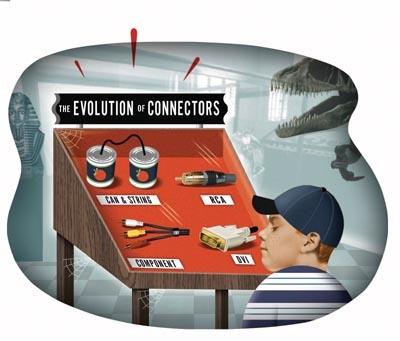The Custom Installer: Irreconcilable Differences

The first thing my wife told me when I returned from the Consumer Electronics Show in January was that our eight-year-old garage-door opener was broken. When it still produced a banshee-like screech after a liberal dose of WD-40 - the universal cure-all for ailing mechanical devices - I decided we needed a new opener.
Since I was replacing it with a larger, upgraded model from a different company, and since this was the first time I'd done this, I was certain installing the new opener was going to be excruciatingly involved. Opening the box did nothing to allay my concerns. Inside was an instruction manual the size of Gray's Anatomy and enough mounting hardware to build C-3PO.
Incredibly, I couldn't have been more wrong. Not only did the new unit fit perfectly into the existing mounting bracket, but the screw holes lined up exactly. More astonishingly, all the old wiring was compatible, the chain fit into the gearbox as if they'd been made for each other, and the old bolts threaded into the new model!
This all comes down to standardization. Could the A/V industry, which tends to change standards almost as soon as they're introduced, learn something from the garage-door industry?
Imagine how much work you'd have to do if you decided to upgrade the components in an eight-year-old home theater system. Most of the pieces would probably be so out of date they'd have to be replaced, and the ones that were still compatible would likely compromise the new gear's performance.
Even with something as basic as connecting speakers to an amplifier, you'll find models with termination options that aren't compatible with all systems. Some systems have proprietary connectors for the receiver, the speaker, or both. And speaker wire can be fitted with connectors that won't fit into every amplifier or speaker. Even amps and speakers that use the popular five-way binding posts can't accept all connectors because the spacing between posts may differ.
When DVD burst onto the scene, the technology was in such a constant state of flux that manufacturers had to scramble to stay current. Some players had Toslink optical connections for their digital audio outputs while others had coaxial. Many early players and receivers weren't compatible because the player had an optical output while the receiver had a coaxial input, or vice versa. Meanwhile, TV owners who were used to making an RF connection to a VCR found they needed a set with composite-video inputs. Experienced videophiles went for the S-video connection, which offered the best picture quality - at least until new players with componentvideo outputs showed up. But it was months before any TVs appeared with this new three-jack input.
Now that we're making the transition to high-definition TV, you'd think the industry would have done enough trial runs to get all the kinks worked out so it could offer us a set of standards we could hang our hats on. Wrong!
In its short life span, HDTV has created more confusion and amassed more connection options than practically any other gear. Component video was the early favorite. But then along came DVI (Digital Visual Interface), which offered a better picture because the image stayed digital all the way to the TV. Thinking the dust had settled, people bought sets with DVI inputs - only to be bushwhacked when it was decided that this connection was so good it had to be protected, so all new sets would offer DVI with HDCP (High-bandwidth Digital Content Protection). Now HDMI (High Definition Multimedia Interface) is looming, with other "solutions" likely lurking just over the horizon.
The specter of incompatibility also confronts anyone prewiring a new house. If you want a plasma TV, you have to choose between a display that uses a "traditional" assortment of composite-, component-, and Svideo connections, or one that receives signals from an outboard box via a DVI cable. But what kind of DVI cable? At least two companies - Sony and Pioneer - require proprietary cables.
Things might be standardized in the world of garage-door openers, but not much has changed in that industry in the past eight years. Meanwhile, we A/V enthusiasts have continued to benefit from constant advances in both picture and sound.
But those advances mean we have to stay up to date on connectors. For the custom installer, it means that there will always be a demand to install cutting-edge cables to connect the latest TVs and accompanying electronics. And while I ponder the changes that high-definition DVD, Wi-Fi, and God-knows-what-else will bring, there's a modicum of comfort in knowing that the garage door is one less thing to worry about.
Back to Custom Installer Main Back to Homepage What's New on S&V













































